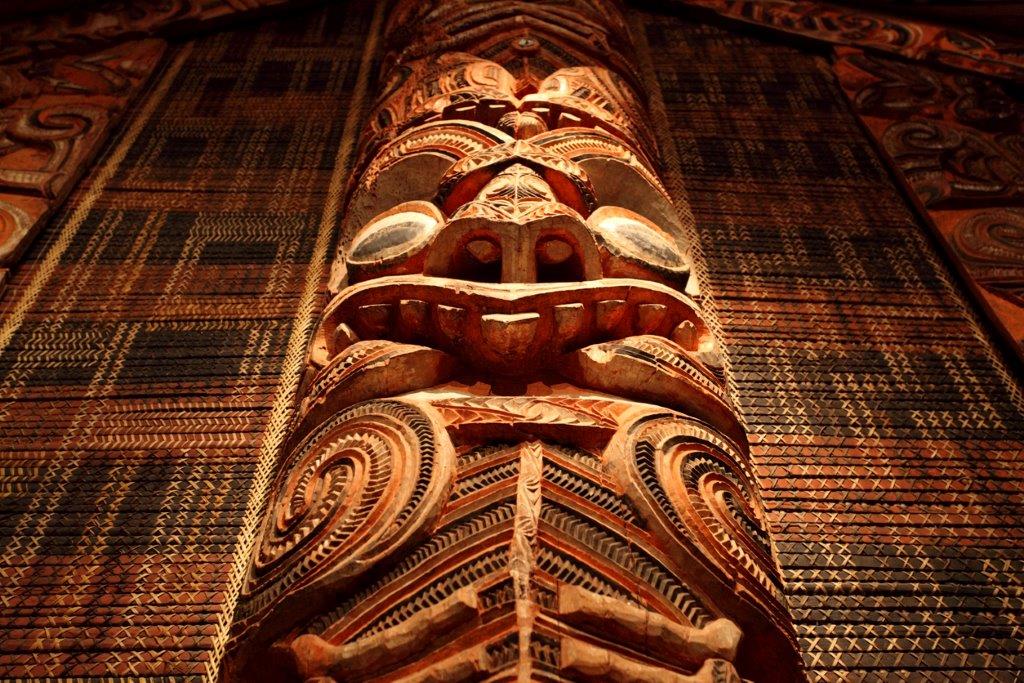Maori Culture In Everyday Life - Spiritual New Zealand
New Zealand’s indigenous Maori community makes up almost 15 per cent of the country's population. The Polynesian migrants made New Zealand their home sometime between the 9th and 13th centuries.
Maori Culture In Everyday Life
New Zealand’s indigenous Maori community makes up almost 15 per cent of the country's population. The Polynesian migrants made New Zealand their home sometime between the 9th and 13th centuries. The Maori people brought with them many ancient beliefs, ceremonial customs and traditions that have, over the years, become an integral part of Kiwi life.
Maori People
New Zealand’s unique mix of culture dates back to 1840 when the founding constitutional document, the Treaty of Waitangi was signed. When Maori chiefs and British crown representatives signed the document New Zealand became a colony. The Maori people first arrived from their ancestral homeland of Hawaiki, some 1000 years ago. Today, there are nearly 700,000 Maori people in New Zealand.
The indigenous people of this country have their own language Te Reo, which is spoken alongside English. Interest in the Maori language has been revived over recent years and schools now include Maori in the curriculum. Maori people are actively involved in keeping their language and culture alive. Within Maori communities the communal ‘marae’ (a combined meeting and dining place) provides a social, cultural and spiritual focus for people to get together.
Most Maori people live in the North Island, and make up around 25% of Auckland’s population. Wellington, Waikato (Hamilton) and Tauranga (the Bay of Plenty) are also popular areas for Maori people to live. Here, the traditional culture of the Maori people is more evident than in other parts of the country.
Modern Maori Culture
Being tribal Polynesian people, Maoris have a unique culture. Their culture is diverse and rich, and includes traditional ceremonies and arts. Traditional arts like wood carving and weaving are practiced alongside the ancestral inspired group performances, known as kapa haka and whaikorero.
Traditional Maori art pays respect to the past and demonstrates a high level of craftsmanship. Intricately carved works usually feature a Maori folklore story that can be translated by those who know the history and culture well.
Maori language is considered to be an important part of a national heritage, with many schools having their own dedicated week of celebrating this indigenous language. Many places still have quaint traditional Maori names that boast five vowel sounds and ten consonants.
Visiting A Marae
Traditional ceremonies bring visitors to the heart of the Maori community. Many ceremonies have long-standing traditions that involve customs that still apply today. When attending a marae you can expect to receive a powhiri (formal welcome). It is traditional for a warrior from the tangata whenua to then challenge the manuhiri (guests), before laying down his spear in peace. The women will perform a karanga, which is a welcome call to the guests. After songs and speeches everyone sits down to enjoy a hearty feast.
Customs & Traditions
Manaakitanga
The heart of the Manaakitanga custom is the act of kindness. This traditional welcome offers hospitality and generosity and demonstrates mutual respect.
Kaitiakitanga
Kaitiakitanga is the Maori name given to the philosophy and strong sense of respect and guardianship that the indigenous people have for the natural environment. Taking responsibility for the natural world is a core value, and something that Maoris take very seriously.
- Mana is spiritual power. In nature this power is represented by the fruit and blossom on the trees, and the animals that come to feed off the land.
- Tapu is spiritual restriction. There is restriction and abundance is nature so that everything remains in natural harmony and balance.
- Mauri is the life force that supports and protects nature and the flow of abundance.
- Customary Greetings
Hongi
If you get up close and personal expect to receive a ‘hongi’ instead of a kiss on the cheek. Hongi is the customary traditional Maori greeting that involves pressing noses together.
The Haka
Immortalized by New Zealand's All Blacks rugby team, the Haka is a traditional and ritualistic war dance that is performed to incite fear in your enemy or opponent. The Maori dance involves aggressive stamping, body slapping and sticking out the tongue in defiance.
Submit A Comment
Create a Psychic Sofa account today!
Join the Psychic Sofa Community Today and get access to:
- Get notified by (FREE) SMS text when a reader becomes available!
- Latest offers and members only exclusives
- Add favourite readers to your profile




Comments
No comments have been made yet